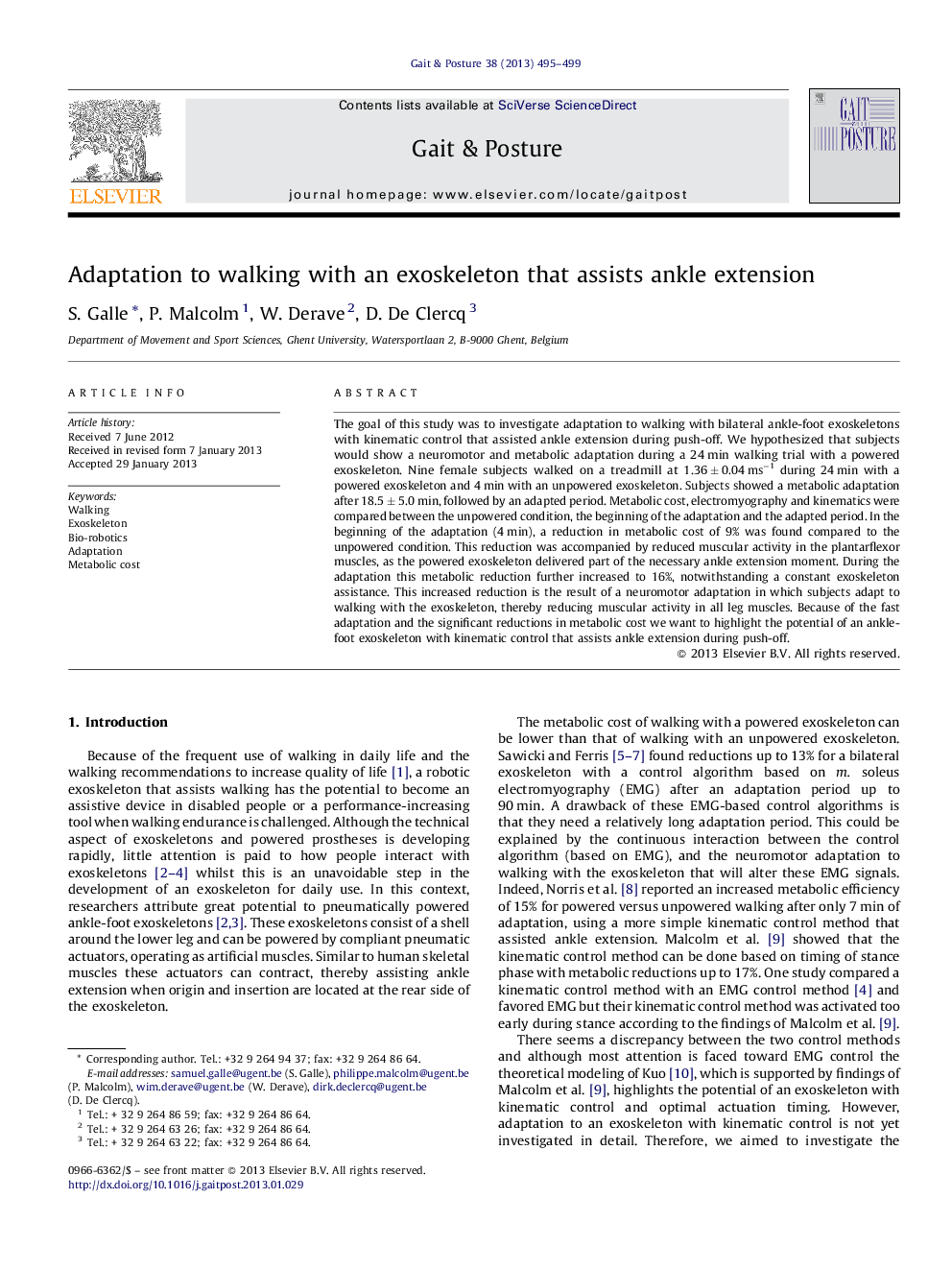| کد مقاله | کد نشریه | سال انتشار | مقاله انگلیسی | نسخه تمام متن |
|---|---|---|---|---|
| 6206642 | 1265650 | 2013 | 5 صفحه PDF | دانلود رایگان |
The goal of this study was to investigate adaptation to walking with bilateral ankle-foot exoskeletons with kinematic control that assisted ankle extension during push-off. We hypothesized that subjects would show a neuromotor and metabolic adaptation during a 24 min walking trial with a powered exoskeleton. Nine female subjects walked on a treadmill at 1.36 ± 0.04 msâ1 during 24 min with a powered exoskeleton and 4 min with an unpowered exoskeleton. Subjects showed a metabolic adaptation after 18.5 ± 5.0 min, followed by an adapted period. Metabolic cost, electromyography and kinematics were compared between the unpowered condition, the beginning of the adaptation and the adapted period. In the beginning of the adaptation (4 min), a reduction in metabolic cost of 9% was found compared to the unpowered condition. This reduction was accompanied by reduced muscular activity in the plantarflexor muscles, as the powered exoskeleton delivered part of the necessary ankle extension moment. During the adaptation this metabolic reduction further increased to 16%, notwithstanding a constant exoskeleton assistance. This increased reduction is the result of a neuromotor adaptation in which subjects adapt to walking with the exoskeleton, thereby reducing muscular activity in all leg muscles. Because of the fast adaptation and the significant reductions in metabolic cost we want to highlight the potential of an ankle-foot exoskeleton with kinematic control that assists ankle extension during push-off.
⺠Bilateral pneumatic ankle-foot exoskeletons with kinematic control were studied. ⺠The ankle-foot exoskeleton showed a metabolic adaptation after 18.5 ± 5 min. ⺠Metabolic cost was reduced with 16% compared to unpowered walking during adaptation. ⺠Metabolic reduction was accompanied with reduced muscle activity in plantarflexors. ⺠The exoskeleton showed fast adaptations and significant reductions in metabolic cost.
Journal: Gait & Posture - Volume 38, Issue 3, July 2013, Pages 495-499
